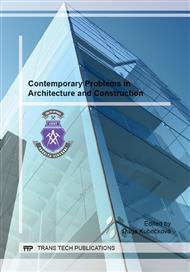p.379
p.385
p.393
p.399
p.405
p.411
p.415
p.423
p.429
Structure Detection and Evaluation of the Highway Tunnel
Abstract:
Combined with a highway tunnel testing and assessment, through the discussing of technical problems existed in tunnel’s quality detecting by the using of geology radar, using gist of geology radar in tunnel’s quality detecting is grasped, the key technologies of survey line layout, acquisition parameters setting and on-site test in the process of geological radar application are concluded. Relying on the field test data, lining thickness and dense degree of the left and right of spandrel and arch crown being in the safe use of phase are more deeply researched. The studies show that geological radar detection technology for tunnel nondestructive testing and evaluation is a kind of effective method, correlation detection technique and analysis method has some reference value to the similar tunnel structure.
Info:
Periodical:
Pages:
405-410
Citation:
Online since:
October 2014
Authors:
Keywords:
Price:
Сopyright:
© 2014 Trans Tech Publications Ltd. All Rights Reserved
Share:
Citation:


